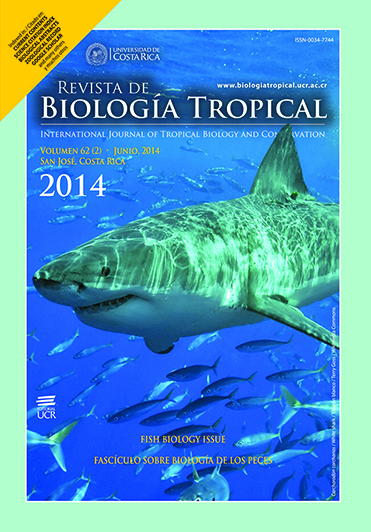Abstract
The shallow water pink shrimp (Farfantepenaeus notialis) is among the socioeconomically most important resources of the Caribbean. The lack of biological and fishery information is of great concern for the fisheries management authorities. The presented study therefore aimed at the investigation of the reproductive cycle, the size composition and the size at first maturity of this species as a basis for the ordination and management of this resource. The study was conducted from June 2012 to May 2013 off the coast of the Caribbean Sea of Colombia. A total of 5 356 individuals were collected, identified, classified and preserved for their subsequent analysis in the laboratory. Size, weight, sex and gonad stage were recorded for each specimen. Significant differences were found in sex ratio in all months sampled with a clear predominance of females. Mature females were found year-around, but two reproductive peaks were identified during the periods October-December and April-June. The mean catch total length size (MCS) for females and males was 148.00mm and 122.54mm, respectively. The mean size at maturity (LT50%) was 129.34mm for females and 97.77mm for males. MCS was always above LT50% for both sexes. Considering the large reduction in fishing effort in the Colombian Caribbean Sea over the last years, we could expect that the shrimp population is in a rebuilding process or perhaps it may be already restored.

This work is licensed under a Creative Commons Attribution 4.0 International License.
Copyright (c) 2014 Revista de Biología Tropical

